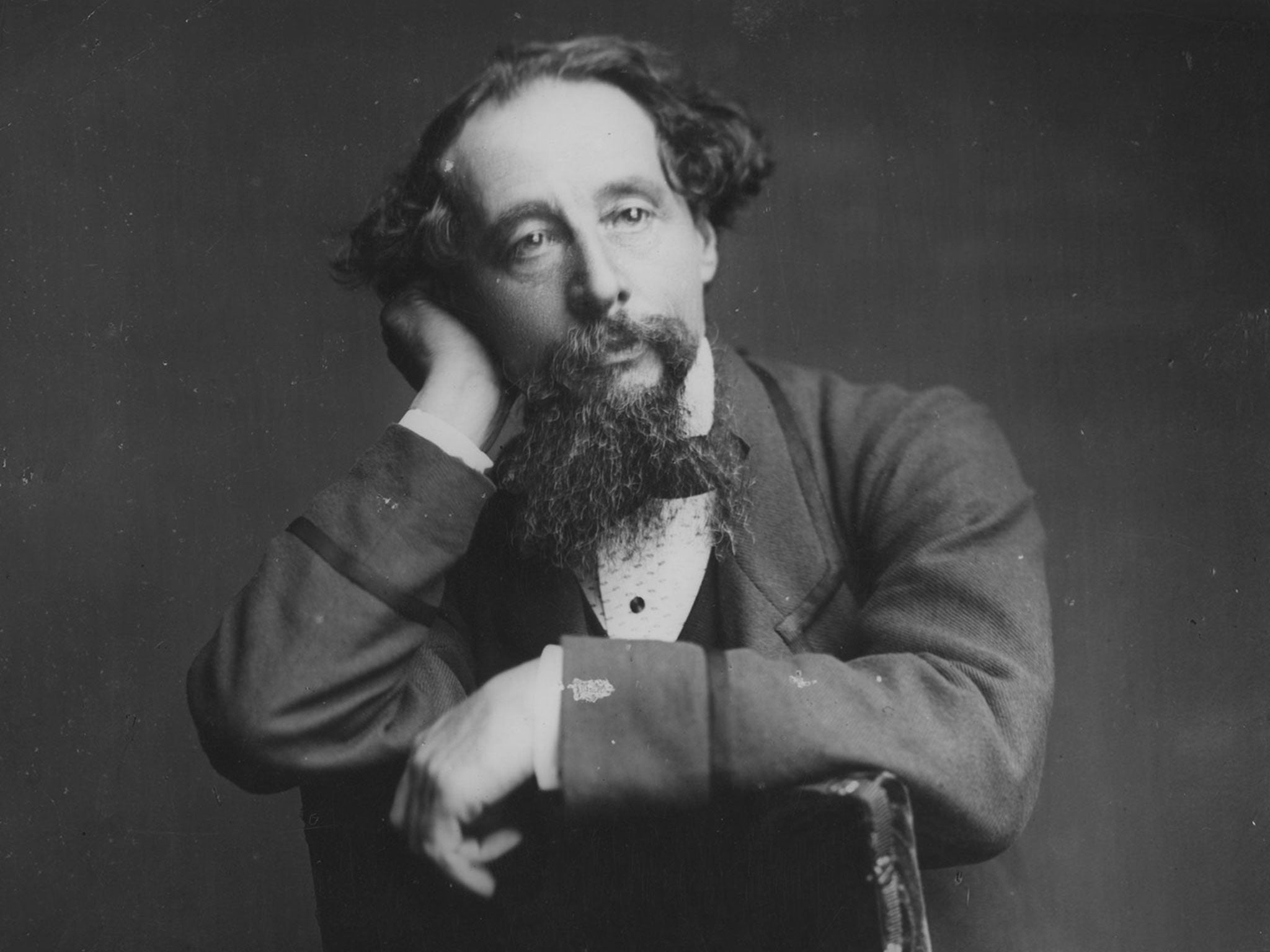Charles Dickens' notes have solved a crucial scholarly question – but where will the valuable volumes end up and how much are they worth?
Exclusive: Immaculate leather-bound collection belongs to Dr Jeremy Parrott

Your support helps us to tell the story
From reproductive rights to climate change to Big Tech, The Independent is on the ground when the story is developing. Whether it's investigating the financials of Elon Musk's pro-Trump PAC or producing our latest documentary, 'The A Word', which shines a light on the American women fighting for reproductive rights, we know how important it is to parse out the facts from the messaging.
At such a critical moment in US history, we need reporters on the ground. Your donation allows us to keep sending journalists to speak to both sides of the story.
The Independent is trusted by Americans across the entire political spectrum. And unlike many other quality news outlets, we choose not to lock Americans out of our reporting and analysis with paywalls. We believe quality journalism should be available to everyone, paid for by those who can afford it.
Your support makes all the difference.With its notes in the spidery hand of Charles Dickens revealing the identity of hundreds of contributors to his magazine, the annotated collection of All the Year Round unveiled this week has been acclaimed as of “immense” scholarly value.
But while aficionados of Victorian literature are salivating at the prospect of poring over dozens of previously unattributed works by writers including Wilkie Collins, Mrs Gaskell and Lewis Carroll, the delicate question is also beginning to be asked of just what the 20-volume collection, spread over 12,000 pages, is worth and where it might eventually end up.
As well as being counted among Britain’s greatest novelists and judicious observers of human frailty, Dickens is also one of the most collectable. His following of monied admirers across the world last year ensured that a signed copy of A Tale of Two Cities, inscribed to George Eliot, was sold for a record-breaking £275,000.
The result is that scholars are already pressing for the groundbreaking discovery of what appears to be the Oliver Twist author’s personal collection of his weekly periodical to eventually end up in an institution, preferably on one in the United Kingdom.
The immaculate leather-bound collection was bought by Dr Jeremy Parrott, an antiquarian bookseller and Dickens expert in his own right, from an unnamed online seller in Wrexham for an undisclosed sum.
Its discovery represents a major breakthrough because, in keeping with practice of the Dickensian era, nearly all articles in All the Year Round were published without the writer’s name. Notes in the margins of the volumes bought by Dr Parrott, most apparently in Dickens’ own hand, reveal for the first time the identity of up to 400 separate contributors to the magazine, which was published between 1859 and 1895.
Professor Michael Slater, the eminent Dickens scholar and an academic advisor the London’s Charles Dickens Museum, told The Independent: “Like all British Dickens scholars I fervently hope that this uniquely important set of volumes, such a rich and major resource for everyone interested not only in Dickens but in all those who wrote for him, will stay in this country.”
Prof Slater added that he believed the “natural home” would be in the library of the Dickens Museum, or failing that the British Library. Interest is, however, also likely to be shown from abroad, in particular American libraries and museums.
For such an outcome to be secured, any organisation with ambitions to own the collection will have to raise a substantial sum. One leading expert on rare books said it was likely the volumes would have an asking price of about £100,000.
Brian Lake, president of the Antiquarian Booksellers’ Association, said: “It is one of those things that you might happen upon once in a lifetime. If the collection is as it has been described, it is very important in terms of attributing works to lots and lots of authors. In terms of value, it is different from something like the signed copy of A Tale of Two Cities. But nonetheless I would expect a collection like this to have a value around £100,000.”
Dr Parrott told The Independent that he may consider a sale as early as later this year but for the moment at least he is more interested in the academic rather than monetary worth of the volumes, whose significance he only realised after he had bought them last year.
He intends to spend at least two years working on identifying a full list of contributors to All the Year Round based on the volumes and said he shared the desire of his fellow scholars to see the collection end up in London.
He said: “I would like the set to go to the British Library or the Dickens Museum but there will doubtless be interest from institutions abroad, principally the US. Once I have extracted the data for analysis, which may be within three months, I would be open to offers. Though the set may yet be put into auction at some point.”
The Dickens Museum, which last year received a lottery grant to buy the writer’s desk and chair for £780,000, declined to comment on whether it would seek to acquire the collection.
Paul Lewis, the BBC broadcaster and Wilkie Collins expert, said those with an interest in Victorian literature wanted above all to ensure that the volumes remained in the public domain.
He said: “It would be an absolute travesty if the collection was somehow squirrelled away by a private collector. Its value as a reference point for so much work is incalculable.”
Join our commenting forum
Join thought-provoking conversations, follow other Independent readers and see their replies
Comments